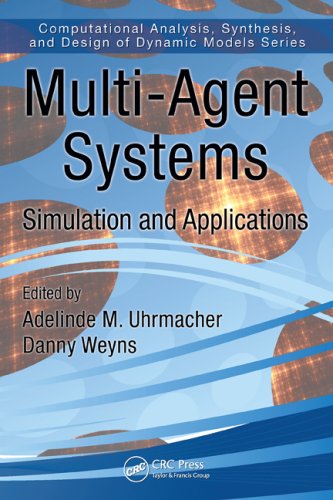Reviewed by
Marco Villani
Department of Social, Cognitive and Quantitative Sciences, University of Modena-Reggio Emilia
 The main purpose of this book, a collection of contributions from different authors, is that of integrating and consolidating the experiences of several decades of research in Multi-Agent Systems (MAS); in particular, the focus is on the intersections of MAS, simulations and applications. In order to deal with this ambitious goal, the editors organize the book's chapters in four main sections, namely Background, Simulation for MAS, MAS for simulation and Tools.
The main purpose of this book, a collection of contributions from different authors, is that of integrating and consolidating the experiences of several decades of research in Multi-Agent Systems (MAS); in particular, the focus is on the intersections of MAS, simulations and applications. In order to deal with this ambitious goal, the editors organize the book's chapters in four main sections, namely Background, Simulation for MAS, MAS for simulation and Tools. The first section is paradigmatic of the whole work, including different chapters having different level of clarity and completeness. This heterogeneity makes difficult a comprehensive evaluation of the opera, but on the other hand the different points of view create a situation where both newcomers and specialists can find reasons of interest. The introduction to MAS topics includes definitions, examples in many research fields, a review of the main area themes and an interesting introduction to the modeling of temporal dynamics, an issue often underestimate by the field practitioners. The main ontological aspects are introduced and discussed, inserted on a general framework that, despite the lack of a general MAS theory, could be valuable to initiate a successful research on the field. Two chapters presenting the main historical models and the tools that actually are used to implement efficient MAS prototypes effectively integrate and complete this introductive part.
The two sections Simulation for MAS and MAS for simulation reflect a peculiar and maybe original subdivision of MAS researches: a set of situations where simulations are executed in order to build, design, develop, test, improve the performances of MAS systems (remembering that not only software situations but also many real situations are MAS systems), and a more classical set of examples where MAS are used in order to capture the essential characteristics of real systems. This subdivision, despite in some case a little bit forced, could be an unusual and instructive point of view.
Eventually, the section Tools presents a number of state-of-the-art experiences on platforms and tools for MAS and simulations, including Jason, JAMES II, SesAm and RoboCup Rescue.
Through the book several disciplines, situations and models are presented and are intersecting each other, including crowd behavior, traffic simulation, stem cells modeling, stigmergic situations, emergence of strategies in game theory, AGV (Automated Guided Vehicles) systems, and descriptions of formal frameworks.
This heterogeneity makes difficult a global evaluation of the opera, but on the other hand it is one of the main points of interest of the book. The fact that the contributions are not directly linked among them makes the book worth reading for a wide range of scientists and MAS practitioners, whereas the bibliography sections allow the deepening of the more interesting issues. In addition, each chapter terminates with a paragraph illustrating the open questions of the involved topics, outlining how the insights just proposed can enable future researches in the related areas.
The book aims to serve different communities. The first audience could be the multi-agent system community, including students in computer science and artificial intelligence; a second audience could be modeling and simulation community, the book presenting modeling and simulation techniques and tools for applying MAS in simulation areas. A third audience could include professionals from various application domains such engineers, biologists or experts in transportations and traffic. In fact, the multi-agent system community and that of modeling and simulation could take advantage from this book, by exploring and discovering ideas and applications different from the usual ones; more difficult is the usefulness for professionals, excluding the cases where there is a specific reason of interest on the peculiar subject matter. Eventually, the book introduces a general framework and discusses many ontological aspects, themes that are unquestionably useful both for practitioners and experts, aiming to deal with this fascinating research field.
Return to Contents
of this issue
© Copyright Journal of Artificial Societies and Social Simulation, 2009